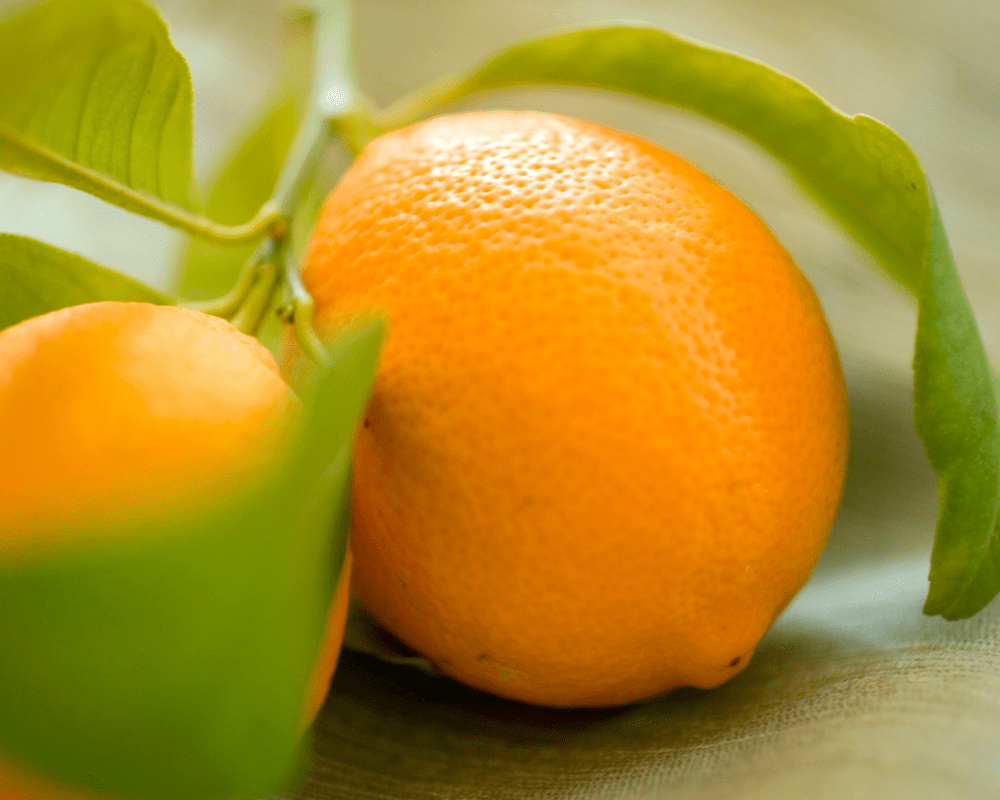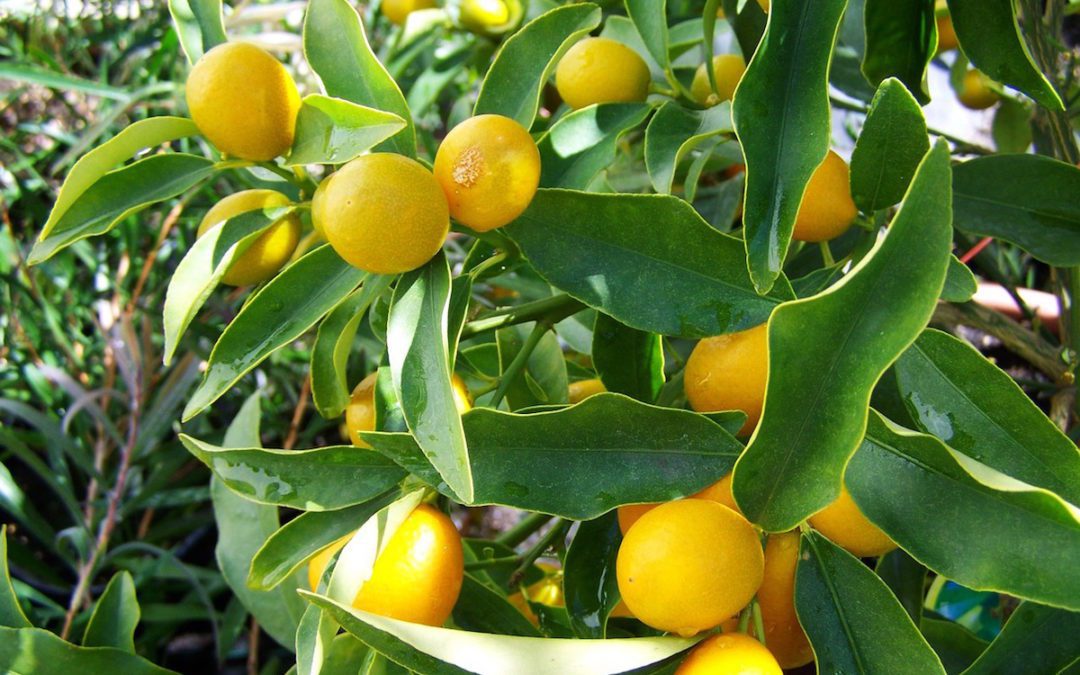If you’ve been going back and forth about purchasing an Improved Dwarf Meyer Lemon, I’m here today to push you in the direction of loading one up in your vehicle and bringing it home. Besides being able to enjoy the bright, fresh, citrusy taste of your own homegrown lemons when they ripen in fall and winter, you will also be servicing our local wildlife by planting a lemon tree. Citrus trees are host plants to Giant Swallowtail butterflies and busy bees go nuts over the sweet-scented blossoms. The Improved Dwarf Meyer Lemon is a perfect option for homeowners to try growing a citrus tree. Its size makes it a great choice for containers or in the landscape (citrus should always be protected in containers for the first 4 years). Let’s take a closer look at the Improved Dwarf Meyer Lemon.


Improved Dwarf Meyer Lemon on Flying Dragon Rootstock
Most citrus trees are grafted to specific rootstocks when grown for nurseries. It is a fast and reliable way to propagate strong trees that will likely fruit and flower earlier than seedling trees. Grafting also allows growers to manipulate the growth habit (dwarf) and include attributes of another tree. Disease resistance, yield improvement, and vigor, can greatly be improved, especially when the chosen rootstock has been proven to grow well in the area you live in. You can learn lots more about grafting here, possibly more than you’d ever want to know.
We have a selection of Improved Dwarf Meyer Lemon trees at Rainbow Gardens that have been grafted to “Flying Dragon” rootstock (look for the ones with the tag stating this). “Flying Dragon” rootstock has shown to be an excellent choice for grafting when a dwarf size is desired. Citrus grafted to this rootstock grows a little slower and only reaches about 30% – 50% of its normal size, resulting in a dwarf version. The “Flying Dragon” rootstock specifically has a smaller and highly fibrous root system which makes it ideal and suitable for growing in containers. This particular rootstock has proven to be more resistant to cold temperatures and wet soils, as well as being highly resistant to root and collar rot, citrus nematodes, and the tristeza virus.
“Flying Dragon” rootstock allows citrus to overwinter better by slowing the metabolism of the tree. A tree growing slower in winter is ideal so that it has more time for hardening off, as opposed to a tree that is growing quickly and producing new growth which ends up being susceptible to damage by cold temperatures. The quality of the fruit grafted to “Flying Dragon” rootstock is also deemed excellent.


Quick Look at Dwarf Improved Meyer Trees
- Average Mature Growth: 8’-15’ tall x 8’-10’ wide
- Sun Exposure: Full Sun
- Soil Requirements: Well-Draining
- Landscape Hardiness Zone: 9-11
- Patio Hardiness Zone: 4-11
- Moisture Needs: Low to Medium (once established)
- Harvest Season: Winter
- Blooms: White, Fragrant
- Evergreen
- Pollinator Friendly
More About Improved Dwarf Meyer Lemon
Meyer lemons have a more rounded shape than traditional lemons. They also tend to be less acidic at maturity. As a matter of fact, while the lemons are yellow, they retain a tart taste, but as they mature and develop an orangish hue, they get sweeter and sweeter. These lemons are excellent when eaten fresh, zested, used in marinades, turned into lemonade or in any recipes where lemon is called for.
Improved Dwarf Meyer Lemon can be grown in both the landscape or containers. We always recommend following the experts’ advice to protect citrus for the first 4 years by keeping it in a container. After that, you can plant in the landscape and either allow your Improved Dwarf Meyer Lemon to grow naturally shrubby (great as a privacy plant), or train it into a small specimen tree by pruning the low hanging branches up to where you end up with a single trunk. It all depends on your preferred aesthetic.
The Improved Dwarf Meyer Lemon is one of the most dependable container grown species of lemon, thanks in part to that “Flying Dragon” rootstock. Make sure you place your container in plenty of sunshine and fill it up with a slightly acidic, high-quality potting mix. Your container must have enough drainage holes in the bottom to allow the water to drain out adequately.
The Improved Dwarf Meyer Lemon tree is one of our favorite citrus trees and we highly recommend it to those just getting started with growing citrus. For more info on growing citrus in San Antonio, don’t miss out on our upcoming “Let’s Talk about Fruit and Citrus Trees” class with Lou Kellog, at our Bandera Rd. location on April 6th from 10AM – 11:30. You can purchase your tickets here.
~The Happy Gardener, Lisa Mulroy


Lisa, I am a home gardener in Nashville, TN growing grafted (unknown rootstock) Meyer lemons successfully for about ten years. I am 70 years old and wanting to do some of my own grafting. I found your article very interesting and am getting in touch with you to see about getting some of that root stock you’re talking about. All of my citrus is in the basement garage under LED lights for the winter. Can I graft over the winter? Your thoughts?
H Charlie,
I haven’t forgotten about you. I hope you got my earlier email stating I was trying to find a source for you. I am still working on it as I would like to find you an expert in this field to advise you.
I am also new at grafting. I grew a lemon plant for about 4 years, no sign of flowering nor do I remember what kind. My niece bought a fruit producing lemon tree (don’t know what kind) and I grafted mine with a piece from hers in the Fall and it worked.
HI Julio,
That’s wonderful! We are so happy you had success!
A follow up on my graft, it seems my root stock is of a large lemon tree, the leafs of the grafted branch grew larger (more than double in size)than its original tree, and it is growing larger than my root stock branches. I hope to see fruits next year.
Best of luck to you and let us know when you get those fruits! Thanks for the update.
Dear Sir/Madam,
I am an agriculture advisor to Island Council in the Maldives. I am interested to order some of your seedlings for the farms here.
I ask for your advice and guidance to select a suitable rootstock for the following varieties of citruses.
1. Bearss Lime.
2. Improved Meyer Lemon.
3. Kumquat Tree.
4. Lane Late Navel.
5. Satsuma Mandarin.
My work here found the best option for a rootstock for the above 5 citruses can be Cleopatra Mandarin (Citrus reshni) as our soil is an alkaline, coral, nematode, and salty in nature. But the rootstock has its weakness for Phytophthora, and citrus nematode mainly.
Like to ask you about the rootstock compatibility with the above-selected varieties, and if there is a better option like Carrizo citrange or any other.
Thanking you.
Ali Shafeeg.
Farmer Advisor.
Maldives.
I am still trying to find the correct source to lead you to for expert advice. I apologize for the delay in information.
The graft I did last fall, has blossomed and I have been pollinating them, hopefully they will grow into lemons (Meyers I think). I have it under a skylight and a small grow light.
Best of luck to you! We’d love to hear of your success.
I have had bad luck with container gardening citrus. I don’t water enough for fear of over watering and then salt (?) builds up. However, if I water so that it drains out the bottom of the pot, I end up seeing defoliation even though I pot with citrus/cactus soil. And that’s not to mention that the blooms never go to fruit because they require manual pollination that I am not consistent about performing. Is it really such a bad idea to plant them in the ground, say in early fall? Can I protect them with mulch, frost cloth and/or C7 Christmas lights?
First I will stick to the advice of growing citrus the first 3-4 years in a container. Secondly, I question if you are on a feeding schedule with your citrus, what size pot do you have it in? Do you test for soil moisture before watering? That can eliminate the fear of overwatering. A long screwdriver, or stick poked in the soil to a depth of 3-5″ to test for soil moisture lets you know if you need to water or not. If soil sticks, don’t water, if it doesn’t stick, don’t. And lastly, if you choose to plant in the ground, all the things you mentioned will help with protecting your citrus through the winter, but it depends on what type of winter we will have. You may have to double up on blankets and frost cloth and they would need to be secure all the way around the plant, over it, and down to the ground. Still, if it gets as cold as the last few, there’s no guarantee that your citrus would come out unscathed. Citrus is most vulnerable those first few years, which is why we follow the advise from Texas agrilife extension service.